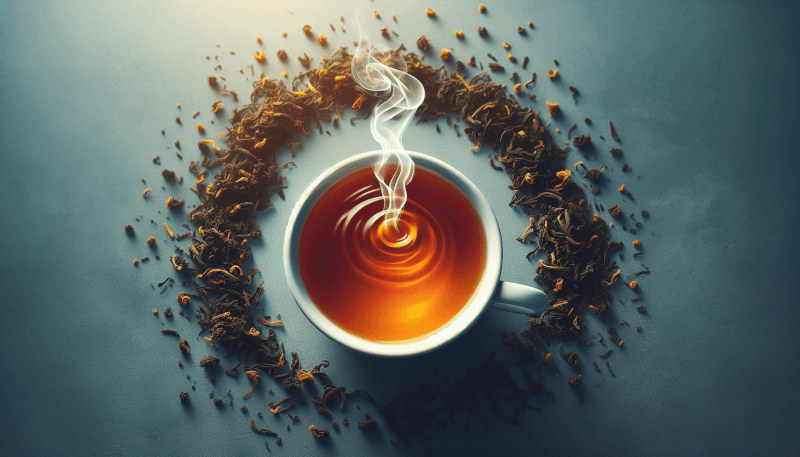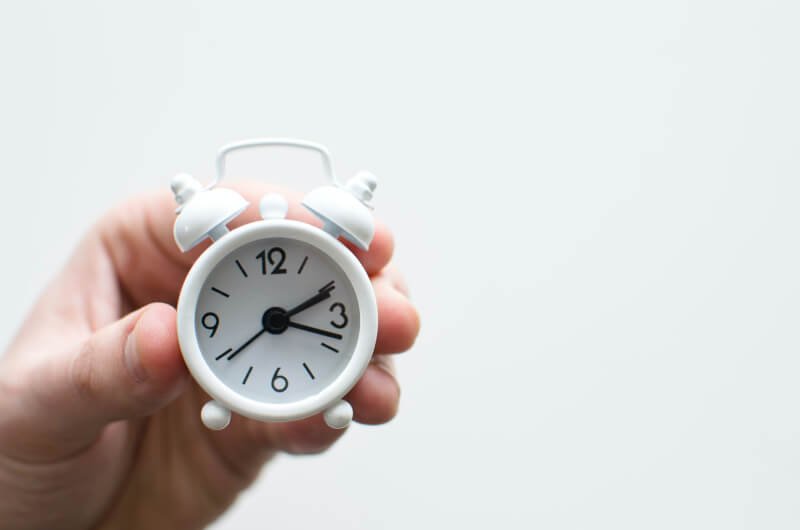Imagine sitting down to enjoy a hot cup of tea, where every sip not only warms your soul but also tantalizes your taste buds. Have you ever wondered why some teas seem to burst with flavor, while others taste weak and bland? The secret lies in the often overlooked step of steeping time. In this article, we will uncover the hidden power of steeping time in tea brewing, revealing how this seemingly insignificant factor can make all the difference in the world when it comes to crafting the perfect cup of tea. So, grab your favorite mug and let’s delve into the fascinating world of tea brewing!
Factors Affecting Steeping Time
Type of Tea
The type of tea you are brewing plays a significant role in determining the ideal steeping time. Different teas have distinct characteristics and flavors, which require varying amounts of time to fully infuse. For example, delicate green teas usually require a shorter steeping time compared to robust black teas. By understanding the characteristics of each tea type, you can ensure that you steep your tea for the optimal duration to achieve the desired flavor and strength.
Tea Quality
The quality of the tea leaves also affects the steeping time. Higher-quality teas, such as loose-leaf teas, often require a longer steeping time to fully release their complex flavors. On the other hand, lower-quality teas, such as tea bags, may release their flavors more quickly. It is important to consider the quality of the tea you are brewing when determining the steeping time, as it can greatly impact the taste of your cup of tea.
Leaf Size
The size of the tea leaves can influence the steeping time as well. Generally, smaller tea leaves, such as those found in tea bags or broken leaf teas, infuse more quickly than larger whole leaf teas. Smaller leaves have a larger surface area, allowing for a faster extraction of flavor. However, it’s essential to note that some teas with larger leaves may require more time to fully develop their flavors. Experimentation and observation are key in finding the right steeping time based on the leaf size of your tea.
Water Temperature
The water temperature during steeping is another critical factor that affects the steeping time. Different tea types have specific temperature requirements to bring out their best flavors. For example, green teas generally require cooler water temperatures, while black teas benefit from hotter water. Steeping tea in water that is too hot can result in bitterness, while using water that is too cool may not fully extract the flavors of the tea. Adjusting the water temperature based on the type of tea will ensure a well-balanced and satisfying cup of tea.
Effects of Steeping Time
Flavor and Strength
The steeping time directly impacts the flavor and strength of the brewed tea. Steeping for a shorter duration can result in a lighter and milder flavor, while a longer steeping time can lead to a more robust and intense taste. If you prefer a bolder cup of tea, you may choose to steep it for a longer duration. Conversely, if you prefer a more delicate flavor, a shorter steeping time might be more suitable. The steeping time allows the tea leaves to release their flavors gradually, enabling you to adjust the taste according to your preference.
Bitterness and Astringency
Proper steeping time is crucial in avoiding excessive bitterness and astringency in tea. Oversteeping can cause the release of tannins, which contribute to the bitter taste and astringency in tea. The longer the tea leaves steep, the more tannins are released, resulting in an unpleasant and overly bitter cup of tea. To prevent bitterness and astringency, it is important to adhere to the recommended steeping times for the specific type of tea you are brewing. This will ensure a well-balanced and enjoyable tea-drinking experience.
Caffeine Content
The length of the steeping time can affect the caffeine content in your tea. Caffeine is quickly released during the initial steeping period, so a shorter steeping time will result in a tea with lower caffeine levels. Conversely, a longer steeping time allows for more caffeine extraction from the tea leaves. If you are looking for a tea with a lower caffeine content, a shorter steeping time can help achieve that. However, it’s important to note that some non-caffeinated herbal teas may not be affected by steeping time when it comes to caffeine content.
Health Benefits
The steeping time can also influence the health benefits derived from tea. Certain compounds in tea, such as catechins and antioxidants, are released during the steeping process. Steeping for an appropriate duration allows for the maximum extraction of these beneficial compounds. However, excessive steeping can lead to the breakdown of some of these compounds, reducing their health benefits. By adhering to the recommended steeping times, you can ensure that you are making the most of the potential health benefits that tea has to offer.

Determining Steeping Time
General Guidelines
While there are general guidelines for steeping times, it is important to remember that they are not absolute rules. These guidelines provide a starting point to achieve a well-balanced cup of tea, but personal taste preferences and variations in tea types can require adjustments. As a general rule, lighter teas such as white and green teas require shorter steeping times, while bolder teas like black teas can be steeped for longer durations. By following these guidelines and experimenting, you can find the perfect steeping time that suits your palate.
Experimentation
Experimenting with different steeping times is an excellent way to discover your preferred flavor profile for a particular tea. Start with the recommended steeping time and gradually adjust it to your liking. It can be helpful to make small increments or decrements in steeping time to identify the subtle changes in flavor. Through trial and error, you can refine your brewing technique and find the optimal steeping time that brings out the best taste in your tea.
Using a Tea Timer
To ensure consistency and accuracy, using a tea timer can be beneficial. A tea timer allows you to set the desired steeping time and alerts you when the tea is ready to be strained. This eliminates the guesswork and helps you achieve consistent results each time you brew your tea. Whether you prefer a dedicated tea timer or a smartphone app, it can be a handy tool to maintain consistency and ensure your tea is always brewed to perfection.
Observing the Tea Leaves
One of the simplest ways to determine the steeping time is by observing the tea leaves as they steep. Different types of tea leaves unfurl and release their flavors at different rates. Pay attention to the appearance of the leaves, their color, and how they move in the water. Once the leaves have fully opened and the desired color and strength have been achieved, it’s time to strain the tea. This method requires a keen eye and some practice, but it can be a rewarding way to develop your tea brewing skills.
Short Steeping vs. Long Steeping
Short Steeping Time
Short steeping times are typically used for lighter teas such as green or white teas, which have delicate flavors. The shorter steeping time extracts fewer tannins, resulting in a smoother and more subtle taste. Short steeping times are also ideal if you prefer a milder cup of tea or if you want to taste the more nuanced flavor notes of the tea leaves. However, it is important to avoid steeping for too short a time, as insufficient steeping can result in a weak and underwhelming flavor.
Long Steeping Time
Long steeping times are often preferred for bolder teas such as black or oolong teas, which have more robust flavors. The extended steeping allows for a fuller extraction of the tea’s flavors, resulting in a stronger and more pronounced taste. Long steeping times can also bring out the complexities and richness of the tea, making it a popular choice for those who enjoy a full-bodied cup. However, it’s crucial to avoid oversteeping, as this can lead to the release of excessive tannins and bitterness.
Tea Concentration
The steeping time directly affects the concentration of the tea. Longer steeping times produce a more concentrated brew, as more of the tea’s flavors and compounds are extracted. This can be desirable if you prefer a stronger tea or if you plan on diluting the tea with additional water or milk. On the other hand, shorter steeping times result in a lighter and less concentrated tea. The tea concentration can significantly impact the overall taste and mouthfeel, so it’s essential to consider your preferences when choosing a steeping time.
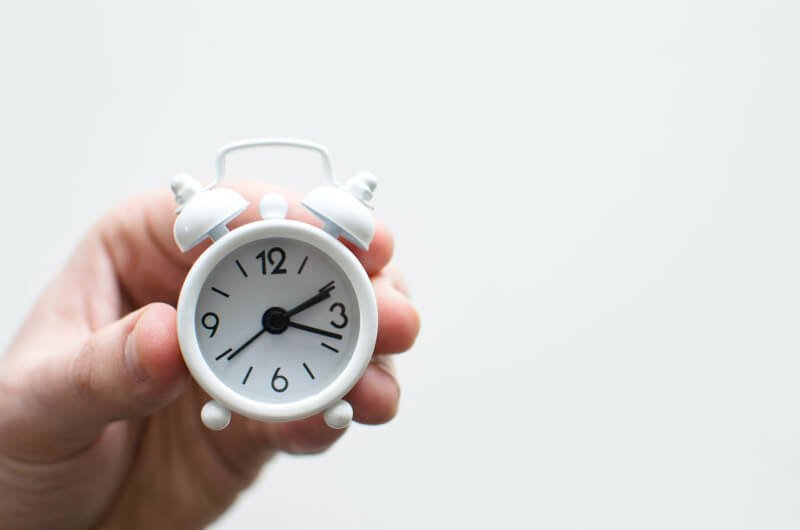
Tea Varieties and Recommended Steeping Times
Green Tea
Green teas typically require a shorter steeping time to preserve their delicate flavors. A general guideline for brewing green tea is to steep it for around 1 to 3 minutes. However, depending on the specific type of green tea and your preferences, the steeping time may vary. If you prefer a milder flavor, aim for a shorter steeping time, while a longer steeping time can result in a stronger and more robust taste.
Black Tea
Black teas can withstand longer steeping times compared to lighter teas. They are often steeped for around 3 to 5 minutes. This allows for a thorough extraction of the tea’s bold flavors and robust aroma. However, it’s important to monitor the steeping time closely to avoid oversteeping, which can lead to bitterness. Experimentation with different black teas and steeping times will help you find the perfect balance and strength for your cup of black tea.
White Tea
White teas are delicate and subtle, requiring shorter steeping times to avoid overpowering their delicate flavors. Steeping white tea for around 2 to 4 minutes is generally recommended. This allows the tea leaves to unfurl and release their flavors while maintaining the tea’s nuanced and mellow taste. It’s crucial to be mindful of the steeping time and adjust it according to your preference to fully enjoy the delicate nature of white tea.
Oolong Tea
Oolong teas often benefit from longer steeping times to fully develop their complex flavors and aromas. The recommended steeping time for oolong tea is typically between 3 to 6 minutes. This allows for a balanced extraction of the tea’s flavors, resulting in a smooth and fragrant cup of tea. However, oolong teas can vary greatly in their characteristics, so it’s recommended to experiment with different steeping times to find the sweet spot for each particular oolong tea.
Herbal Tea
Herbal teas, or tisanes, are made from a variety of herbs, flowers, and fruits, and do not contain tea leaves. The steeping time for herbal teas varies depending on the ingredients used. As a general guideline, herbal teas can be steeped for around 5 to 7 minutes. However, some herbal teas may require shorter or longer steeping times to fully release their flavors. It’s important to follow the brewing instructions specific to each herbal tea to achieve the desired taste and maximize the herbal infusion.
Popular Tea Brewing Methods
Gong Fu Cha
Gong Fu Cha is a traditional Chinese tea brewing method that involves multiple short steepings to unlock the full potential of the tea leaves. It is commonly used for oolong teas and requires a higher leaf-to-water ratio. The steeping times used in Gong Fu Cha are generally short, ranging from a few seconds to a minute. This method allows for a precise exploration of the tea’s flavor evolution and ensures a consistent taste across consecutive infusions.
English Afternoon Tea
The English Afternoon Tea brewing method typically involves steeping black tea for a longer duration to achieve a stronger cup. The steeping time for English Afternoon Tea is typically around 3 to 5 minutes, depending on personal taste preferences. This method is often used for black teas such as Assam or Darjeeling and results in a full-bodied and robust tea that pairs well with milk and sugar.
Japanese Sencha
Japanese Sencha, a type of green tea, is traditionally brewed using lower water temperatures and shorter steeping times. The typical steeping time for Sencha is around 1 to 2 minutes. The shorter steeping time allows for a lighter and more refreshing cup, preserving the tea’s vibrant green color and delicate flavors. Japanese Sencha brewing method emphasizes precision and careful attention to water temperature and time control.
Mint Tea
Mint tea, often made from fresh or dried mint leaves, is a popular herbal infusion known for its refreshing and soothing qualities. The steeping time for mint tea is generally around 5 to 7 minutes, allowing the mint leaves to infuse the water with their invigorating flavors and aromatic properties. Mint tea is a versatile beverage that can be enjoyed hot or iced, making it a delightful choice for any time of the year.
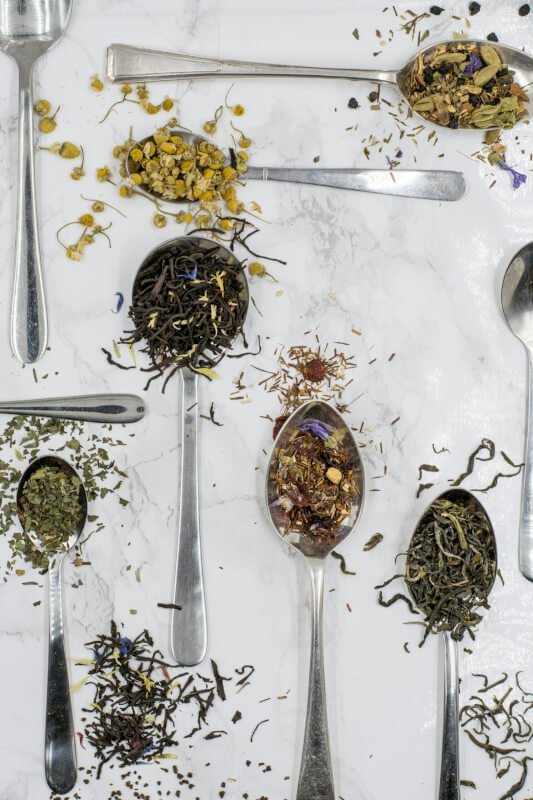
Importance of Consistent Steeping Time
Replicating Desired Flavor
Maintaining a consistent steeping time is essential when aiming to replicate a specific flavor profile. If you have found a steeping time that produces a tea with the flavor and strength you enjoy, sticking to that duration ensures consistency in each brewing session. Consistency allows you to reproduce the same taste experience repeatedly, providing a comforting and familiar cup of tea.
Avoiding Over- or Under-Steeping
By adhering to the recommended steeping times, you can avoid both under-steeping and over-steeping your tea. Under-steeping can result in a weak and flavorless cup, while over-steeping can lead to unpleasant bitterness and astringency. Consistent steeping time prevents these extremes and helps you achieve a well-balanced and enjoyable cup of tea every time.
Consistency in Experiments
If you are conducting tea experiments or taste tests to compare different teas or brewing methods, maintaining a consistent steeping time is crucial. This allows you to focus on the variations in taste, aroma, and texture between different teas rather than variations caused by inconsistent steeping methods. Consistency in steeping time ensures that any differences observed are due to the specific variables being tested, providing more accurate and informative results.
Enhancing Tea Brewing Skills
Consistently practicing and refining your tea brewing skills can lead to a deeper understanding and appreciation of tea. By paying attention to steeping times and consistently experimenting with different durations, you can develop a more nuanced palate and recognize the subtle nuances in flavors between different teas. Consistency in steeping time allows for controlled experimentation and gradual improvement in your tea brewing expertise.
Tea Steeping Techniques and Tips
Preheating Teaware
Preheating your teapot or teacup by rinsing them with hot water before steeping can help maintain the desired steeping temperature. This ensures that the temperature of the tea is not compromised when it comes into contact with the cold surface of the teaware. Preheating also primes the teaware, allowing for better aroma, flavor, and extraction when the tea is steeped.
Proper Water Measurement
Using the correct amount of water for steeping is crucial to achieve the desired strength and concentration in your tea. Measuring the water accurately ensures consistency in each brew. It is recommended to use a kitchen scale or a measuring cup to measure the water volume precisely. By following the recommended water-to-tea ratio, you can achieve the intended strength and flavor profile of the tea.
Tea-Water Ratio
The ratio of tea leaves to water is an important factor in determining the strength and taste of your brewed tea. Different tea types may require different ratios depending on their characteristics. As a general guideline, a ratio of 1 teaspoon of tea leaves per 8 ounces of water is a good starting point. Adjust the ratio based on personal preference and the specific tea’s characteristics to achieve the desired flavor and concentration.
Multiple Infusions
Certain types of tea, such as oolongs or loose-leaf teas, can be steeped multiple times to fully explore their flavor profiles. Adjusting the steeping time and water temperature for each subsequent infusion can unveil different dimensions and nuances in the tea. By experimenting with multiple infusions, you can make the most of the tea leaves and enjoy a richer and more complex tea-drinking experience.
Pouring Techniques
The way you pour the water over the tea leaves can impact the brewing process. Gentle pouring ensures even distribution of the water over the tea leaves and allows for a more balanced extraction. Pouring too forcefully can disturb the tea leaves and lead to a less consistent flavor. By pouring the water slowly and steadily, you can ensure a more controlled and uniform infusion of the tea.
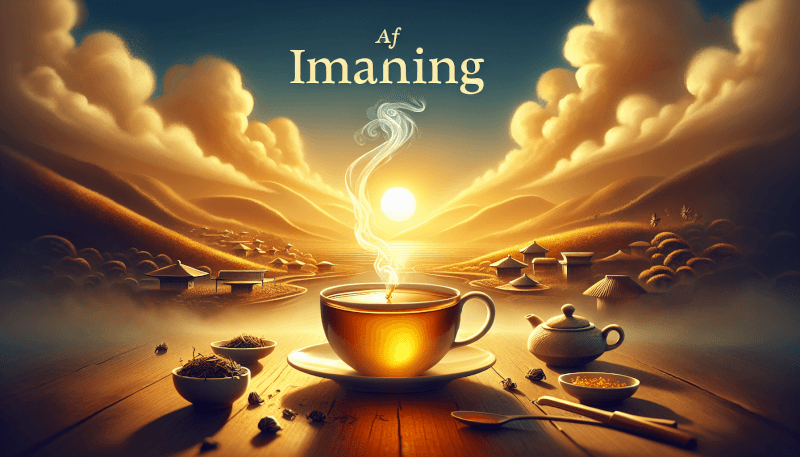
Experiments on Steeping Time
Effects of Different Steeping Times
Conducting experiments to compare the effects of different steeping times allows you to gain a deeper understanding of the tea’s flavor profile and taste characteristics. Steeping the same tea for varying durations can reveal how different steeping times influence the intensity of flavors, aroma, and overall experience of the tea. By carefully documenting your observations, you can create a reference guide for future brewing sessions and develop a personal preference for steeping time.
Taste Testing
Taste testing various teas using different steeping times is a fun and educational activity that allows you to explore the vast world of tea flavors. Comparing the tastes of teas brewed with short, medium, and long steeping times can help you identify your preferred flavor profiles. This hands-on approach to tea tasting enables you to fine-tune your palate and discover new and unique tea experiences.
Comparing Tea Varieties
Experimenting with different steeping times also provides the opportunity to compare and contrast tea varieties. By brewing different teas using the same steeping time, you can focus on the distinct characteristics and nuances of each tea. This exploration allows you to expand your tea knowledge and discover new favorites based on your personal preferences.
Temperature and Steeping Time Interaction
The interaction between water temperature and steeping time is an interesting aspect to explore in tea brewing. Adjusting the steeping time based on the water temperature can have a significant impact on the resulting flavor and strength. By experimenting with different combinations of water temperature and steeping time, you can unravel the intricate relationship between the two variables and find the ideal balance for your preferred taste.
Conclusion
Understanding the role of steeping time in tea brewing is essential for achieving the perfect cup of tea. Factors such as the type of tea, tea quality, leaf size, and water temperature all contribute to determining the ideal steeping time. The steeping time directly affects the flavor, strength, bitterness, and caffeine content of the tea. It also influences the potential health benefits derived from the tea. Determining the steeping time can be done through general guidelines, experimentation, using a tea timer, or observing the tea leaves. Short and long steeping times result in different flavor profiles and tea concentrations. Different tea varieties require specific steeping times to bring out their unique characteristics. Popular tea brewing methods such as Gong Fu Cha, English Afternoon Tea, Japanese Sencha, and Mint Tea have their own steeping time recommendations. Consistency in steeping time is vital to replicate desired flavors, avoid over- or under-steeping, maintain consistency in experiments, and enhance tea brewing skills. Various techniques and tips, including preheating teaware, proper water measurement, tea-water ratio, multiple infusions, and pouring techniques, can enhance the tea brewing experience. Conducting experiments on steeping time can further deepen one’s understanding of tea and showcase the effects of different steeping times. By understanding and carefully considering the role of steeping time, you can elevate your tea brewing skills and enjoy a truly delightful and personalized tea-drinking experience.
